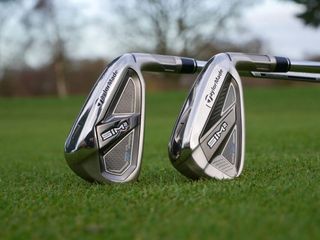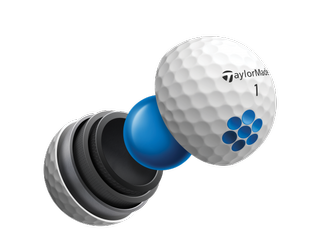How To Make More Effective Gear Changes
If you want to play your best, you need the right equipment. Here's some expert advice from TaylorMade's Mark Thistleton on how to make the correct gear changes...

If you want to play your best, you need the right equipment. Here's some expert advice from TaylorMade's Mark Thistleton on how to make the correct gear changes...
How To Make More Effective Gear Changes
We sat down for a chat with Mark Thistleton, European Tour Rep for TaylorMade, to chat about how club fitting works on Tour with players like recently signed Tommy Fleetwood and TaylorMade veteran Rory McIlroy.
We also chat about how amateurs can get the best out of club fittings and how the right up-to-date gear can make significant but subtle changes to your game.
How Tour Players Are Fitted

Tour players are so well dialled in to their equipment that when it comes to putting new clubs into play, it's our job as fitters to transition them into the new product and highlight the benefits.
I’ll use Tommy Fleetwood as an example as he switched to TaylorMade last winter.
Get the Golf Monthly Newsletter
Subscribe to the Golf Monthly newsletter to stay up to date with all the latest tour news, equipment news, reviews, head-to-heads and buyer’s guides from our team of experienced experts.
The whole process was around five days as he wanted to hit the ground running with his new gear. We started with metal woods, then went onto iron lofts and lies, then shot shaping and then some golf ball testing off and on course. It was very data driven on the range and then it was taken onto the course for some feel testing.
Generally, we don’t do a lot of shaft testing when looking at a new product because we'll often use the same shaft the player has been getting on well with for the previous season. This means we can do an ‘apples for apples’ test with the new club head because we’ve taken the variable of the shaft out of it. Then we can start to figure out if we need to tweak the setup, the lie angle, the loft and the face angle of the new head.
RELATED: How To Prepare For The 2021 Season
This was definitely the case with Tommy. When he left us in Dubai after those days of testing, he had the SIM2 10.5° driver, SIM2 rocket 3-wood and a SIM2 5-wood, all in the same shafts he’d been playing previously.

He also took a 7-wood as he’s a very, very good fairway wood player and he likes to have that extra option for his 230-240 yard option. Like lots of players, he’ll swap that club in and out with his 3-iron depending on the week.
Then in his irons, he’s got a 3-iron to pitching wedge in his TF irons, which are basically the TW irons in Tommy’s spec.
Tommy also uses the TP5x ball, which was a big win for us in the testing process because we went in there with no real pressure for him to change the ball. We worked back from putting and chipping with the TP5x to taking it out on the course and I think even Tommy was surprised with how well the ball testing went.
The ball testing process can often be quite a hard one and quite a big change for Tour players who are so used to very precise yardages.
Tommy was gaining about 4 or 5 yards with his irons and he had a great feel with them.
He was calling out yardage numbers on how he felt the strike was and it was always within a yard or two of his feel which is exactly what Tour players look for in a ball because they don’t want any to suddenly jump out too far or spin too much and come up short.
Distances are absolutely critical for Tour players, so we had Tommy’s caddy and coach watching him hit hundreds and hundreds of shots to get the distances right with the irons.
REVIEW: TaylorMade SIM2 Driver
Regular Golfer Fitting Tips

The more feedback you give to the fitter, the quicker you’re going to get to a good outcome and a good conclusion to the fitting.
From a player’s perspective, whether a pro or a handicap golfer, your job is to give feedback on the feel.
Then a fitter’s job is to look at the data and make sure it stacks up to what the player is saying.
Data is only 50% of the fitting process however because a club could be giving you really good numbers but not feel quite right.
If it doesn’t feel right then, no matter what the numbers are saying, you’re probably not going to consistently time the ball well and that definitely isn’t the right club.
Does it feel heavy? Does it feel slow in transition?
These kinds of thoughts need to be fed back to the fitter who can then advise from a data point how it is going.
The combination of good data and good feel is where you can get the perfect golf club.
Your wedge line-up

It still amazes me how much old equipment I see in people’s bags at golf clubs.
Wedges is the biggest one. The Tour players are changing their wedges three, four or even five times a year, yet an amateur golfer who plays every weekend keeps the same set of wedges in the bag for four or five years and doesn’t notice the deterioration in performance.
Ask yourself, how old are my wedges? How much do I use them when I play?
Depending on the answers to those questions, you really should be getting a new set of wedges yearly.
Find more forgiveness

I think a lot of people are unaware as to how much technology has played a part in making clubs more forgiving than they used to be, especially the iron technology.
If you change your equipment every one or two years you may only see very incremental improvements, but if you’ve got some golf clubs in your bag that are four or five years old, you’ve got to go and test the new stuff to see how much difference there really is.
Forgiveness is the biggest difference as technology has got progressively better. You can hit these new irons across the whole face and still get really good feedback, good distance and good height on shots. That’s probably the biggest technology improvement I’ve seen and it amazes me how many people are content to sticking with old irons and old technology.
REVIEW: TaylorMade SIM2 Irons
Your golf ball choice

A lot of amateur golfers don’t put much focus or emphasis on the golf ball and testing a ball that works for them. A lot of people I know just use whatever they pick up, but getting a consistent golf ball that you like the feel and the flight of can really help.
This can make a huge difference to a wide range of handicap golfers, high or low, who will find playing with the same ball provides much more consistency with touch around the green and the way the ball reacts to pitch shots.
Articles created in partnership with TaylorMade.
-
 Valero Texas Open 2025 Picks, Predictions And Odds
Valero Texas Open 2025 Picks, Predictions And OddsThe last event before The Masters takes place at the Valero Texas Open, where there is one final spot available for the first men's Major of 2025
By Matt Cradock Published
-
 Hurry! Amazon's Big Spring Sale Ends Today - Here Are 15 Deals I Recommend
Hurry! Amazon's Big Spring Sale Ends Today - Here Are 15 Deals I RecommendThe event ends at midnight tonight, so if you still have a gap in your gear setup, now is the time to fill it!
By Sam Tremlett Published